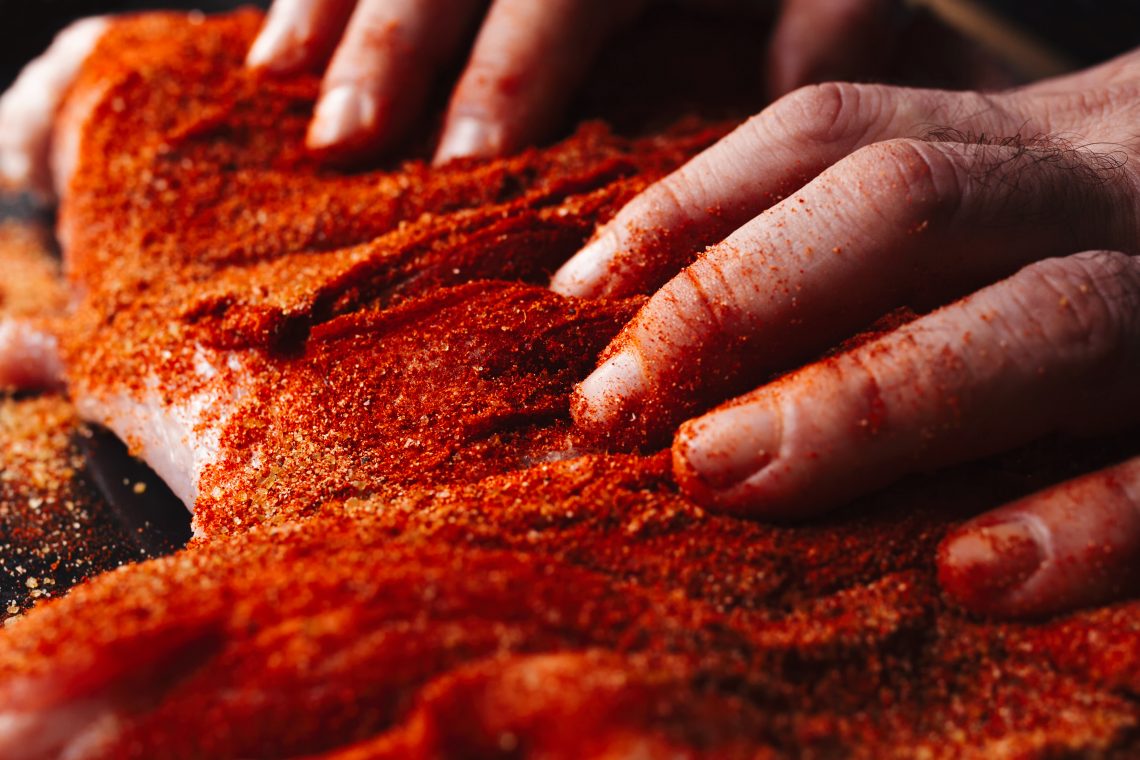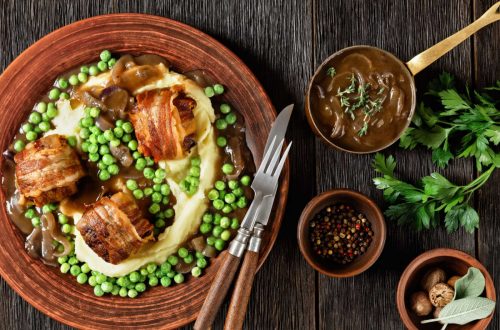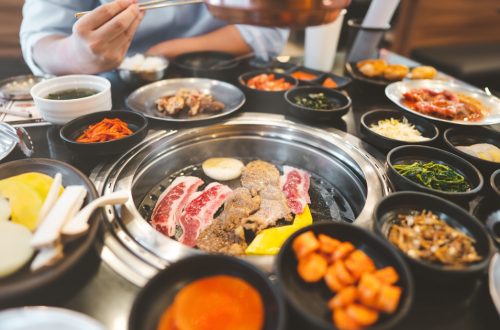
Rubbing Your Meat the Right Way
Want to up your grilling game? I’ll advise paying more attention to the foundations of flavor. It’s about more than just lighting the fire and attending to the heat. Steve Raichlen, the author of several books on barbecue including The Barbecue Bible, compares the barbecue process to construction. Grills and smokers are the tools; knowing flame and heat control are the methods; the solid foundation is built on the rubs and marinades. As for the various bastes and sauces, think of them as finish work or paint – improving or emphasizing flavors. But absent a good foundation, you will have a less distinctive meat course.
Rubs, a combination of herbs, spices, and salts, transform a base flavor for the meat and can also foster the formation of a crust. Marinades are liquid combinations of oils; acid juices (lemon, vinegar, or yogurt); and assorted herbs and spices that soak in flavor. They are especially suited to lean, dry meat such as chicken breasts. In addition, the acids break down the muscle fibers to make the meat more tender, while the oils keep the meat moist during cooking. In between marinades and rubs are wet rubs or spice pastes, which are herb and spice mixtures bound together by a liquid such as oil, yogurt, or water.
Rub it in good
A good homemade rub incorporates most of the flavor profiles: sweet, sour, salt, and bitter. Raichlen’s basic barbecue rub includes coarse kosher or sea salt, dark brown sugar, paprika, black pepper, garlic powder, dried onion flakes, cayenne pepper, and celery seeds. But rubs can be localized and should reflect the type of meal you’re preparing. For example, if you want to give that basic rub more of a New England cast, substitute maple sugar for brown sugar. For a more Southwestern approach, add chili powder or better yet, chipotle chili powder.
As you find your own blends for various meats, here are some additional spices to experiment with:
- Allspice, sweet and spicy, is one of the defining flavors of jerk rub.
- Cardamom, a favorite of Near and Far East cuisine, adds a sweet and exotic accent.
- Cinnamon is widely used in cuisine from Mexico to India.
- Cloves, found in many ketchup and BBQ sauces, are sweet and aromatic.
- Coriander, too, is pungent and sweet.
- Cumin’s earthy flavor is central to many rubs from the Southwest as well as Latin America.
- Paprika’s smoky and earthy bite is central to many rubs.
Some spices are more highly localized. Saffron is a popular marinade ingredient in the Mediterranean region; sumac, which lends a tart, lemony flavor, is savored in the Near East; and turmeric is widely used in Southeast Asia and is a key ingredient in curry powder. Of late, I’ve become interested in spice mixes from North Africa.
Make it with marinade
Making the whole process work means paying close attention to the entire construction. Raichlen describes a low-and-slow barbecue method this way. First, well in advance, marinate your meat, making sure that the marinade includes an acid such as vinegar or lemon juice. When ready to start cooking, dry your meat, then coat it with your rub. Light your smoker, bring it to the appropriate heat, and place your meat on the rack. While smoking, maintain an even heat and periodically spray the meat with a liquid such as apple cider. (I use apple juice mixed with some bourbon.) When your long, low, slow barbecue cooking is nearing an end, you can, if you wish, slather the meat with your favored sauce. Raichlen says Indian tandoori masters baste their lamb with butter during grilling, then serve it with mint and chutneys and raita, a yogurt sauce.
Yes, it might look complicated, but I think you’ll find it’s an easy process and definitely worth any learning curve. You’ll reward your guests with a tasty result that means those once-tough cuts of meat you’ve lovingly barbecued will melt in their mouths.
To comment, please click on “Read in Browser” or on the headline to view the blog on the website. You can log in and comment at the end of the blog to share your thoughts and start a discussion.
If you’d like to share the blog, click on the Facebook icon or one of the others. Thanks!




